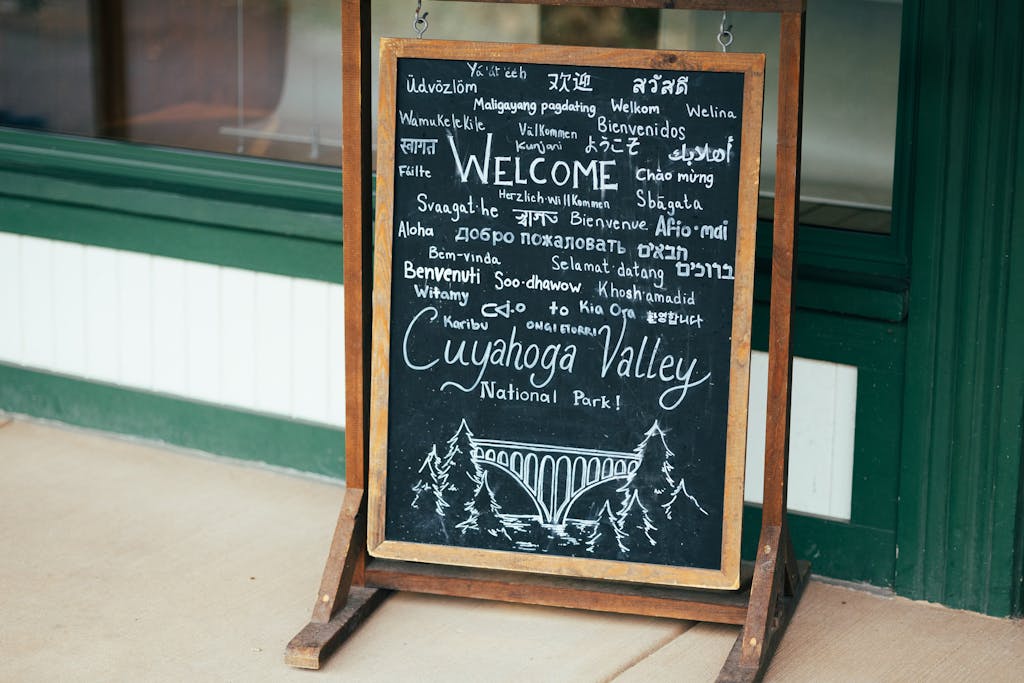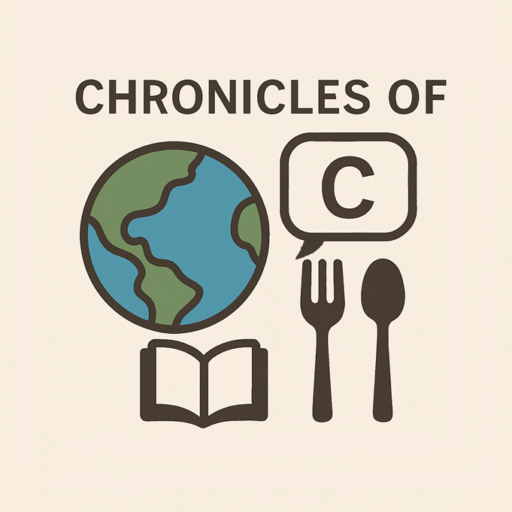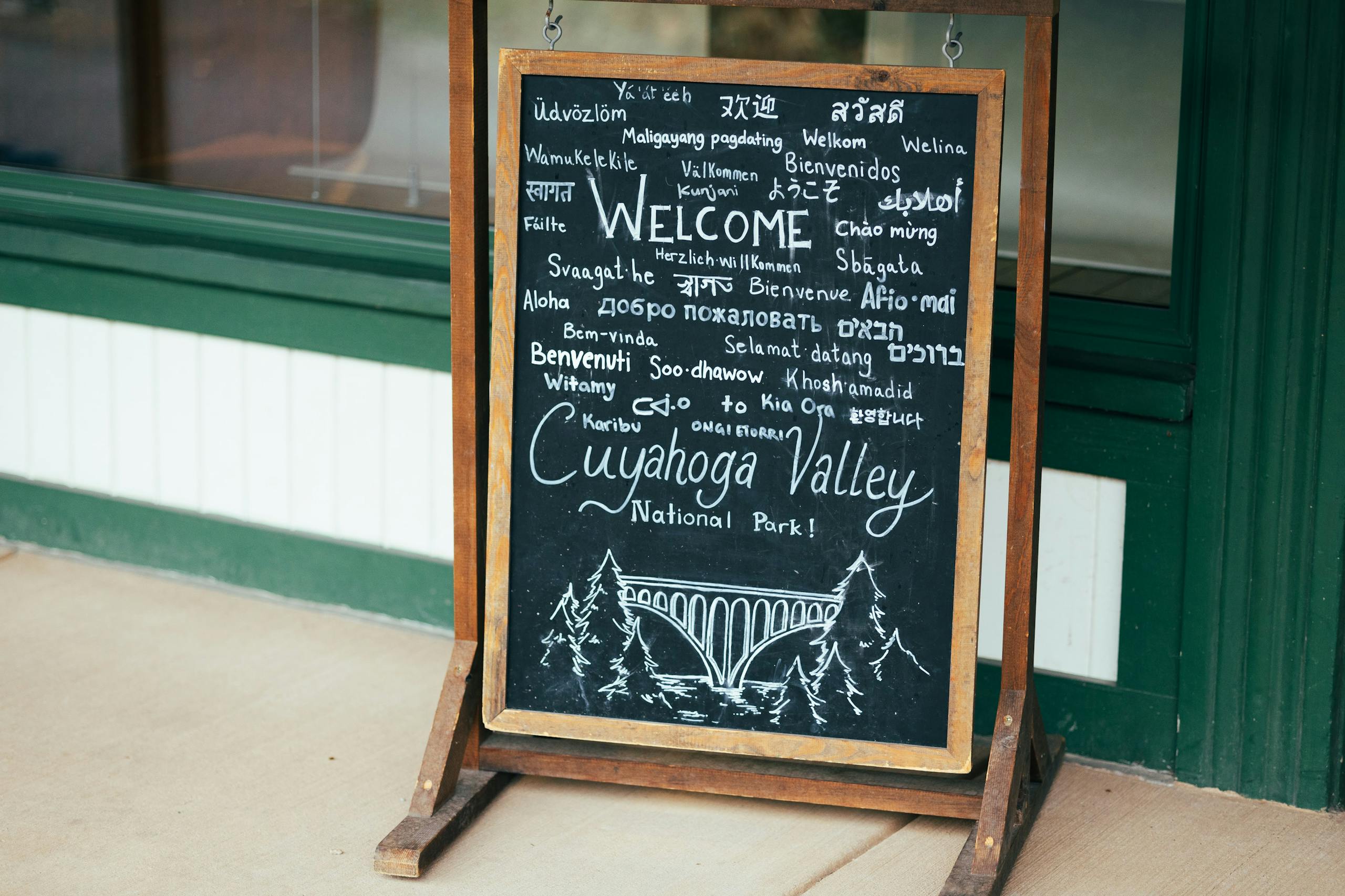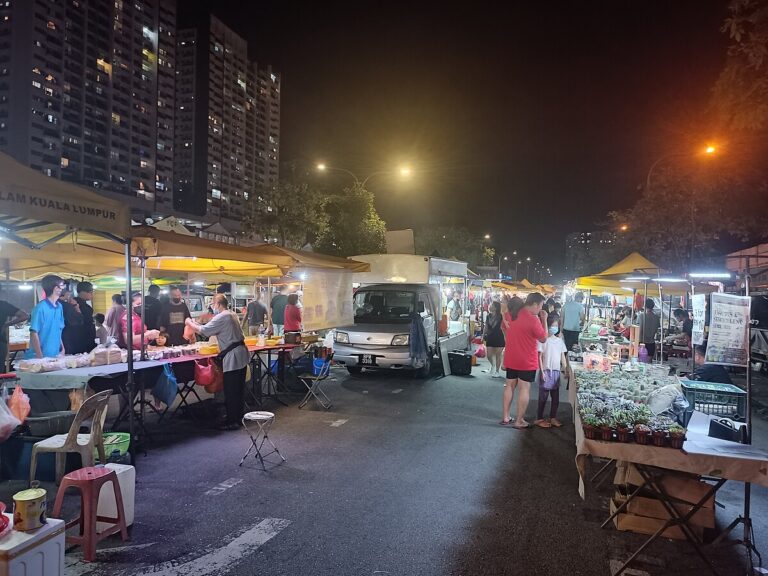Travel Language Guide: Ever find yourself trying to ask for something simple but you just can’t seem to get your point across despite all the gesturing? Or getting slightly annoyed that using a translation app is slow and adds yet another barrier to your communication? If you’re a curious traveler nodding along, you’re in the right place.
Learning a new language can feel like a monumental task, especially when you’re already juggling trip planning. You may also wonder why learn a new language when you are just going to a place for a week or two? Here’s a secret: you don’t need to be fluent to transform your travel experiences. Even a handful of key phrases can unlock doors, build bridges, and easily enhancing your travel experience.
This post is your friendly companion to navigating language for travelers. We’ll ditch the overwhelming grammar books (ain’t nobody got time for that at the start) and focus on practical, smart ways to communicate, connect, and truly experience the places you visit.
🔓Unlock Deeper Travel: Why Learning Local Language (Even a Little!) Matters
You might be thinking, “Isn’t English spoken everywhere nowadays?” or “Can’t I just use a translation app?” While these are partly true, but more often that not you will find yourself in a situation having trouble communicating with someone.
Here’s why making an effort with the local language is a game-changer:
- Builds Trust & Connection: It shows effort and breaks down barriers instantly. Locals are often more willing to open up, share insights, or offer help when they see you trying.
- Shows Cultural Respect: Language is deeply intertwined with culture. Attempting to use the local language, even imperfectly, signals that you respect their heritage and aren’t just there to tick sights off a list.
- Enhances Daily Interactions: From ordering food with confidence to navigating local transport or haggling politely at a market, a few key phrases make everyday situations smoother and more enjoyable (and will always become a core memory of your trip)
- Opens Doors to Unique Experiences: Knowing a bit of the language can lead to unexpected invitations, off-the-beaten-path discoveries, and interactions you’d never have otherwise. That hidden gem restaurant? The local festival tip?
- Increases Safety & Independence: Being able to ask for help, directions, or understand basic warnings can be crucial, especially if you find yourself in a tricky situation.
🗓️ Beyond Fluency: Mastering Travel Communication Without Months of Study
You do NOT need to be fluent to communicate effectively while traveling. You don’t have to put that pressure on yourself. For most travel scenarios, your goal isn’t to have complex conversations. Your aim is to be understood and be able to navigate daily situations.
Here’s how to master travel communication beyond just words:
- The Power of Non-Verbals: Your body language often speaks louder than words.
- A genuine smile: Universally understood and appreciated.
- Pointing (politely!): Useful when words fail, but be mindful of cultural norms (e.g., using an open hand instead of a single finger in some cultures).
- Gestures: Thumbs up, nodding, shaking your head (again, check local customs as meanings can vary!).
- Eye contact: Shows engagement, but its appropriateness can differ culturally.
- Tone of Voice: A friendly, patient, and appreciative tone can make even broken phrases sound pleasant. Conversely, a demanding tone in perfect local language will still be off-putting.
- Patience and a Good Attitude: Misunderstandings will happen. Approach them with humor and patience, and most people will be happy to help you out. Don’t be afraid to make mistakes and be embarrassed.
- Setting Realistic Goals for Language Learning Before a Trip:
- For a 1-week trip: Focus on essential greetings, politeness phrases, numbers, and how to ask for help for various things. Aim for 20-30 key phrases.
- For a 1-month trip (or longer): You have more time to build a slightly larger vocabulary. Aim for those core phrases plus more specific vocabulary related to your interests (e.g., food, hobbies). You might even start to pick up on sentence structures.
🔑 Top 20 Essential Travel Phrases: Your Survival Kit for Any Destination
If you learn nothing else, master these in any language! These “survival phrases” are your linguistic lifeline in almost any country. While pronunciation will vary, the intent is often understood. I’ll provide the English here, go and find their equivalents in the language of your destination.
Greetings & First Impressions
1. Hello / Hi
2. Good Morning
3. Good Afternoon / Good Evening
4. Goodbye
Essential Politeness Phrases
5. Please
6. Thank You (and “Thank you very much”)
7. You’re Welcome
8. Excuse Me / Sorry (for bumping into someone, or to get attention)
Getting Help & Directions
9. Can you help me?
10. I don’t understand.
11. Do you speak English? (Use this after attempting a greeting in the local language!)
12. Where is the toilet / bathroom?
13. I am lost.
Dining Out: Ordering Food & Drinks
14. The menu, please.
15. Water, please.
16. I would like… (and then point, or say the item if you know it)
17. The bill/check, please.
Numbers Every Traveler Needs
18. One, Two, Three (knowing up to 10 is fantastic for basic transactions or quantities)
Emergency & Urgent Phrases
19. Help!
20. I need a doctor / hospital. / Call the police.
🧠 Smart Travel Language Hacks: Learn Key Phrases Quickly Before Your Trip
Most of us will not have time for lengthy courses. These smart language learning techniques are designed for busy travelers who want maximum impact with minimum pre-trip study time.
Old School: Phrasebooks & DIY Flashcards
- Phrasebooks: Look for traveler-focused ones with phonetic spellings. Don’t try to memorize the whole book; highlight your “Top 20” and pick out relevant sections and phrases that you think you will use (food, shopping).
- DIY Flashcards: Write the English phrase on one side and the local phrase (with pronunciation guide) on the other. Physical cards or apps like Anki work wonders (I’m a huge fan of Anki for language learning)
Best Travel Language Apps for On-the-Go Learning
- Duolingo: Great for gamified vocabulary building and basic sentence structure. Fun and motivating for beginners (but make sure you focus on learning and not only just the gaming)
- Google Translate: Essential for on-the-fly translations, but use it wisely (more on this later!). Download languages for offline use.
- Others include Memrise, LingQ
Listen & Repeat: Using YouTube & Podcasts for Pronunciation
- Search YouTube for “basic [language] phrases for travel.” Many channels offer visual and audio cues.
- Listen to podcasts in the target language (even if you don’t understand much) to get a feel for the rhythm and sounds.
- Shadowing: Listen to a short phrase and try to repeat it exactly, mimicking the intonation and speed.
The “Chunking” Method: Mastering Whole Phrases, Not Just Words
- Instead of learning “water,” “I,” “want,” “please” separately, learn the whole chunk: “Water, please” or “I would like water, please.” This is more practical for immediate use. Try to then form your own sentences with different words by mixing and matching vocabulary.
The “First 50 Words” Rule: Your Foundational Vocabulary for Any Country
- Beyond greetings and politeness, think about common nouns (water, food, toilet, hotel, taxi, shop, money) and verbs (eat, drink, go, need, want, understand). Having these in your arsenal is incredibly useful.
Immerse Yourself: Active Listening & Practice on the Ground
- Don’t be afraid to try out your phrases. Most people appreciate the effort. Don’t waste your effort learning prior to the trip and back out at the last moment.
- Jot down new words or phrases you hear frequently in a small notebook or a notes app.
Leverage AI: Using Translation Tools Wisely
- Google Translate / Microsoft Translator:
- Text input: Obvious, but reliable.
- Conversation mode: Great for a slightly more natural back-and-forth.
- Camera mode: Point your camera at signs or menus for instant translation. Incredibly useful in places where they don’t have English available.
- ChatGPT etc
- I have not tried it myself but there are people who say it works wonders
- Downsides of the above is that it bypasses and takes away the most important element – which is YOU!
My Printable Resources for Offline Use (Your Future Best Friends! – coming soon)
- Our “Printable Phrase Cheat Sheet in 6 Languages”
- Our “First 50 Words You Should Learn for Any Country”
👋🏻 Beyond Words: Understanding Cultural Nuances in Travel Language
Communicating effectively abroad isn’t just about what you say; it’s often about how you say it, and the unspoken rules that govern interaction. Ignoring these can lead to misunderstandings, even if you are fluent in the language.
Tones & Formality:
- In many languages (e.g., Thai, Vietnamese), tone changes the meaning of a word.
- Levels of formality are crucial. Using an overly casual tone with an elder or someone in authority can be disrespectful in cultures like Japan or Korea. When in doubt, err on the side of being more formal.
The Silent Language: Hand Gestures:
- A “thumbs up” is positive in many Western cultures, but offensive in parts of the Middle East and West Africa.
- Pointing with a single index finger can be rude; use an open hand or a gentle head nod towards the object/direction.
- The “OK” sign (thumb and forefinger forming a circle) has vulgar connotations in some countries (e.g., Brazil, Turkey).
- Rule of thumb: Observe locals and be cautious with gestures until you understand their meaning.
Understanding Honorifics:
- Many Asian languages (e.g., Japanese, Korean, Javanese) have complex systems of honorifics – suffixes or different vocabulary used to show respect based on age, status, or relationship. You won’t master these as a tourist (most foreign language learners spend a ton of time trying to figure this out), but being aware they exist fosters sensitivity. Using the polite forms of “you” and verbs is a good start.
Common “False Friends” or Phrases that Don’t Translate Directly:
- “No problem” as a response to “thank you” is common in English. In some cultures, the direct translation might sound dismissive. A simple “you’re welcome” (in the local language) is usually safer.
- Directly saying “no” can be considered impolite in some cultures. People might use more indirect phrases like “it’s difficult” or “maybe.”
Addressing People:
- Using first names is common in some cultures, but very informal in others. Using titles (Mr., Ms., Dr.) followed by the family name is often safer until invited to be more casual.
🤔 Tailoring Your Language Learning for Travel: Short Trips vs. Long Stays
Your language learning strategy should adapt to the length and style of your trip. Here’s a quick guide:
- The Weekender/Short Trip (under 2 weeks):
- Focus: High-frequency survival phrases (greetings, please/thank you, numbers, where is…?, help).
- Tools: Heavily rely on your phrasebook/flashcards, translation apps (especially camera mode for menus/signs), and a willingness to use gestures.
- Goal: Basic functional communication and showing respect.
- The Explorer (1+ month):
- Focus: Expand beyond survival phrases. Learn vocabulary related to your interests (food, hobbies, nature). Start noticing simple sentence patterns.
- Tools: Continue with apps and phrasebooks. Consider a few beginner lessons on an app like Duolingo before you go. Actively try to engage in very simple conversations.
- Goal: More confident daily interactions, ability to ask simple questions and understand simple answers.
- The Digital Nomad/Expat-in-Training (Living Abroad):
- Focus: Deeper, more structured study. Aim for conversational ability to be able to truly immerse in the country and connect with the locals.
- Tools: Consider online tutors (iTalki, Preply), local language classes once you arrive, language exchange partners. Immerse yourself in local media.
- Goal: Meaningful conversations, functional independence, and deeper cultural integration.
No matter your trip length, any effort is better than none!
📖 My Stories: How Speaking the Local Language Transformed My Travels
Being able to speak basic Japanese got me out of trouble multiple times. Once my wife and I were wondering whether we are on the right train, I got off to confirm with the train conductor in Japanese. He told us we were on the wrong train and it was about to leave soon. Without which I probably would have ended up in different cities with my wife.
Another fond memory would be when I attempted to purchase jamón and cheese and had to speak to the shopkeeper. He did not speak much English. I did not speak much Spanish. But we met in the middle and communicated with each other and got our ideas across in a mix of both broken languages. I ended up with delicious meat and cheese which I don’t think I would have been able to obtain otherwise.
❌ Avoid These Common Language Mistakes Tourists Make Abroad
We all make mistakes – it’s part of learning! But awareness of common pitfalls can help you communicate more effectively and respectfully.
- Speaking English Louder and Slower: If someone doesn’t understand English, volume or speed won’t magically grant them comprehension. It often comes across as condescending and rude.
- The “Zero Effort” Approach: Not even learning “hello” or “thank you” in the local language can be perceived as disrespectful or uninterested in the local culture. Many people hate tourists for over-populating their towns and cities, don’t give them another reason to.
- Over-Reliance on Translation Apps Without Context: Apps are great tools, but they lack nuance and can’t understand context or non-verbal cues. Don’t hold your phone up for every single interaction; try your learned phrases first.
- Fear of Imperfection & Not Asking for Help: Many travelers are shy about their pronunciation. Most locals appreciate the effort and are happy to help you say things correctly if you ask politely (e.g., “How do I say this?”).
- Assuming Everyone Understands Your Accent in Their Language: Even if you know the words, your accent might make it hard for native speakers to understand. Speak clearly, be patient, and be ready to write it down if needed. You may be speaking correctly, so don’t beat yourself up.
- Getting Frustrated: Language barriers can be frustrating. Take a deep breath, smile, and try another approach (gesture, app, find someone else). Your attitude makes a huge difference.

Conclusion: Your Journey Starts Now with this Travel Language Guide
If there’s one thing to take away from this guide, it’s this: learning even a little bit of the local language is about connection, not perfection. It’s about showing respect and opening yourself up to new experiences.
Don’t let the fear of making mistakes hold you back (I am very guilty of this all the time and I am trying to change). Embrace the awkward fumbles, the mispronunciations, and the moments you have to resort to charades – they often make for the best travel stories! You will only get better as the trip progresses.
So, before your next adventure, pick a few phrases. Download an app. Practice in the shower or with your travel companions. And most importantly, use what you learn. You’ll be amazed at how a simple “hello” or “thank you” in the local language can transform your interactions and deepen your appreciation for the country you are visiting.
Start here!
📌 FAQ Section: Answering Your Top Travel Language Questions
Q: Do I really need to learn the local language before traveling?
A: Need? No, you can often get by with English and translation apps in touristy areas. Should you? Absolutely, if you want a richer, more connected experience! Even 5-10 basic phrases make a huge difference in how locals perceive and interact with you.
Q: What’s the best app for learning essential travel phrases quickly?
A: I always advocate for using Anki. Find premade decks online or make your own! I will likely be creating my own decks for this website soon, so do watch out for it.
Q: How long does it realistically take to learn basic survival phrases for travel?
A: You can learn 10-20 essential survival phrases in just a few hours of focused effort spread over a week! Consistency is key. 15-30 minutes a day using flashcards or an app can equip you well for a short trip.
Q: What are the easiest languages for English speakers to pick up for travel?
A: Generally, Germanic languages (Dutch, Norwegian, Swedish) and Romance languages (Spanish, Italian, Portuguese, French) are considered easier for English speakers due to shared roots and vocabulary. I would say Malay is another language that is easy to add to your arsenal as well. However, “easy” is subjective and depends on your motivation and learning style! Focus on the language of where you want to go.


